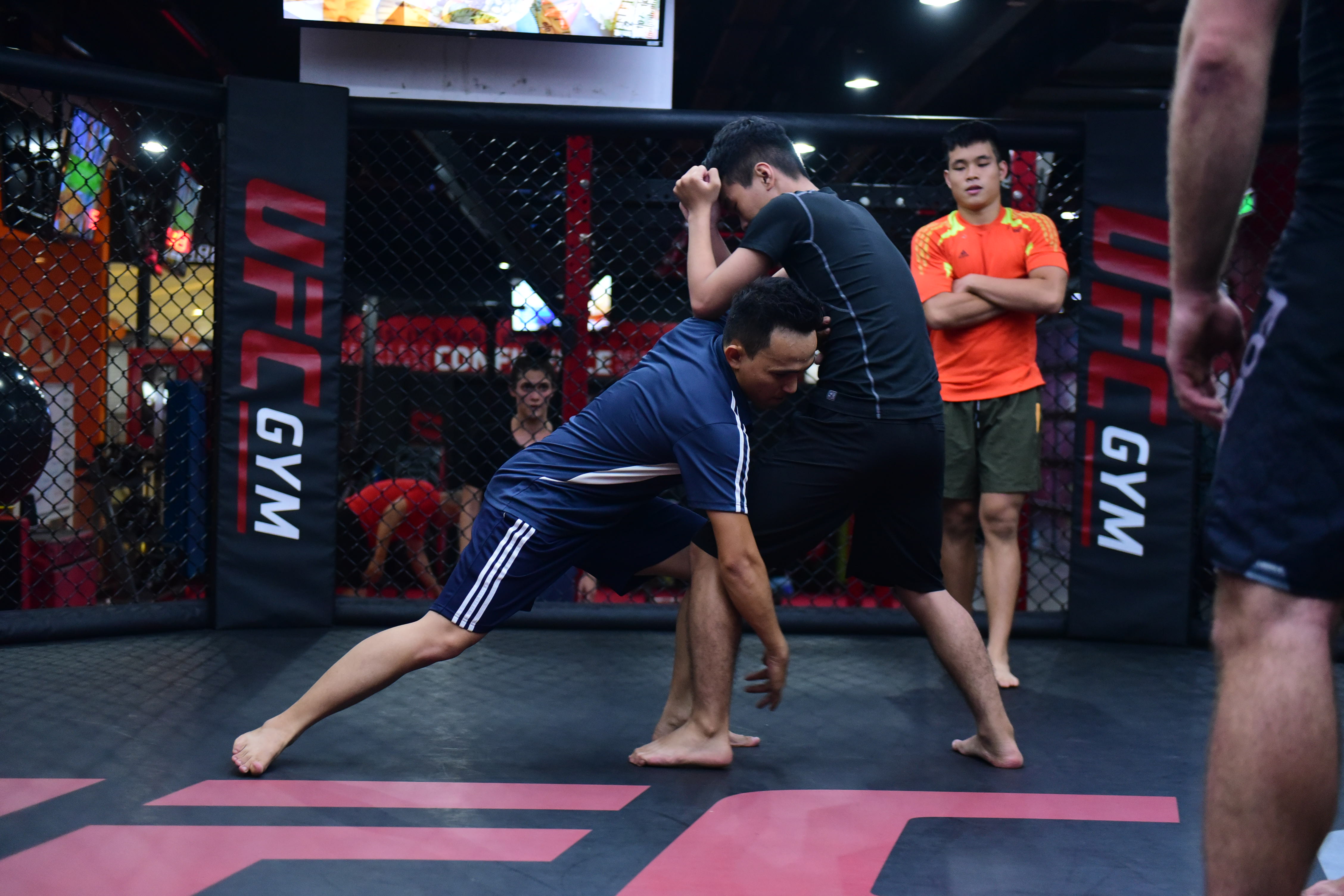Vietnamese are taking advantage of the growing number of martial arts making their way to the Southeast Asian country
The rising popularity of new martial arts forms in Southeast Asia is opening doors for Vietnamese hoping to break from familiar styles and switch to more combative sports, including mixed martial arts (MMA), kickboxing, wrestling, and Brazilian Jiu-Jitsu (BJJ).
Traditional disciplines in Vietnam, such as taekwondo, karate, judo, and vovinam, are often considered intimidating and formal.
Special uniforms and ceremonies can sometimes push newcomers away from the sports.
MMA, BJJ, and other more ‘informal’ styles are giving Vietnamese the option to try something new without making expensive commitments.
No more uniform, no more ceremonial fighting. Just showing up and learning.
Nguyen Van Nam, for example, sports sweat pants and a tee on his way to the gym, just like anyone else looking to pump some iron.
The 22-year-old athlete, however, is in fact heading to an MMA workout.
Nam trained in taekwondo for eight years before beginning MMA about a month ago.
“There was something missing with taekwondo. I switched to MMA because I was told it was more interesting and required more skill,” Nam said.
“I agree with that opinion,” He continued.
“It is still a martial art, but it makes me feel more confident and energetic. The fighting is more realistic, too.”
Nam’s MMA class has a total of 10 students and is held at a large martial arts center in District 2, Ho Chi Minh City.
The center offers classes in a wide variety of combat sports, such as Muay Thai and BJJ.
In MMA classes, students focus on combining various disciplines, including jiu-jitsu, wrestling, and boxing.
Nam’s instructor is Vinod, a Malaysian professional MMA fighter skilled in karate, wrestling, boxing, jiu-jitsu, and Muay Thai.
Vinod has traveled to several Southeast Asian countries to compete, learned vovinam, a Vietnamese martial art, and been exposed to several traditional martial arts in Vietnam.
“I learned vovinam as a way to learn about Vietnamese culture and how to apply the sport to MMA,” Vinod said.
“It was not easy, but as an MMA fighter and coach I really enjoyed the atmosphere of the Vietnamese traditional martial arts training sessions.
“It teaches the kids discipline, morality, and formal spirit.”
Another trainer at the center is Pierre Desdevises, a BJJ coach from France.
The 34-year-old coach has been living in Vietnam for three years.
He is married to a Vietnamese woman and speaks fluent Vietnamese.
Desdevises started learning a Vietnamese martial art in France at the age of 15, but after ten years, decided to try his hand at various other combat sports, including BJJ.
On a trip to Vietnam, the Frenchman met his future wife and chose to stay and pursue a coaching career in the country.
“Ever since I chose to become a coach in Vietnam, I have had this idea of mixing Vietnamese martial arts and BJJ in certain ways,” he said.
“I am still getting to know more about Vietnamese martial arts. I love them as much as I love BJJ.”
There are about ten students in Desdevises’ class, but half of them are female.
“BJJ is simply Brazilian judo. It is similar to judo, but the holds are more dangerous,” said Nguyen Hong Van, a female student who has practiced BJJ for about two months.
“I had been doing judo for about two years, so it wasn’t too strange to switch to BBJ. I wanted to try something new and to learn about Brazilian culture as well.”























































